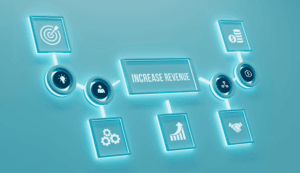After-Tax Income TaxEDU Glossary

Your AGI can directly impact the deductions and credits you’re eligible to take, potentially reducing your taxable income and the amount of taxes you owe. For example, your AGI has to be below certain levels to claim the Lifetime Learning Credit. The standard deduction is a flat amount determined by the IRS based on your filing status.
- At least 45 people were killed in a strike on Rafah, according to the Hamas-run health ministry.
- They include contributions to a health savings account (HSA) or self-employed retirement plan, health insurance premiums for self-employed people, student loan interest, and more.
- Making smart, tax-efficient investment decisions can significantly increase your after-tax income.
- The amount of after-tax income can dictate how much a person can save or invest.
- The after-tax income concept presented in this definition does not correspond to any income concepts used by CRA for tax purposes.
Income for Businesses After Tax
- Business expenses, as recorded on the income statement, are subtracted from total revenues producing the firm’s income.
- Also, a bi-weekly payment frequency generates two more paychecks a year (26 compared to 24 for semi-monthly).
- Changes in tax laws can significantly affect an individual’s or company’s after-tax income.
- The calculation is based on the 2024 tax brackets and the new W-4, which, in 2020, has had its first major change since 1987.
- Exempt employees, otherwise known as salaried employees, generally do not receive overtime pay, even if they work over 40 hours.
- After-tax income also influences stock prices and the attractiveness of a company to investors.
The worker is a taxable employee if the relationship has no such boundaries. This test looks at the degree of control an employer has over the financial aspects of the job. A worker with significant control over the supplies used for their work is an independent contractor in some professions. A Form 1040 return with limited credits is one that’s filed using IRS Form 1040 only (with the exception of the specific covered situations described below).
Poverty in the UK: statistics – House of Commons Library – Commons Library
Poverty in the UK: statistics – House of Commons Library.
Posted: Mon, 08 Apr 2024 07:00:00 GMT [source]
Why You Can Trust Finance Strategists
Tax deductions and credits can significantly reduce your tax liability, thereby increasing your after-tax income. Here, Sarah’s proactive 401(k) contribution increases her after-tax income to $44,475, indicating the impact of strategic financial planning. For example, many sole proprietors are eligible for up to a 20% qualified business income deduction. This means that a sole proprietor would pay tax on up to 20% less of their income than an employee who earns the same amount. By taking your after-tax income and divvying it up between bills, household needs, and other savings plans, you can really make some sound financial moves. The after-tax income concept presented in this definition does not correspond to any income concepts used by CRA for tax purposes.

Our Services
While most companies tend to set their overtime rates at the minimum, which is time and one-half, companies that provide an overtime rate of two times the regular rate are not out of the ordinary. Exempt employees, otherwise known as salaried employees, generally do not receive overtime pay, even if they work over 40 hours. For more information about overtime, non-exempt or https://www.bookstime.com/articles/what-is-a-virtual-accountant exempt employment, or to do calculations involving working hours, please visit the Time Card Calculator. Add up all sources of taxable income, such as wages from a job, income from a side hustle, investment returns, etc. However, estimating your taxable income before filing your tax return can help you avoid surprises because it gives you an idea of how much you’ll owe.
- When analyzing or forecasting personal or corporate cash flows, it is essential to use an estimated after-tax net cash projection.
- Apply the appropriate tax rate to this amount based on your tax bracket.
- Israel’s military says it is investigating the strike, which also killed two senior Hamas officials.
- The most commonly chosen options will be “Single,” “Married Filing Jointly,” and “Head of Household.” It is possible for a single person to claim another filing status.
- A self-employed individual may have the same before-tax income as an employee.
- Some individuals and businesses choose to incorporate or move abroad to countries with lower tax rates.
This is one of the reasons why independent contractors tend to be paid more hourly than regular employees for the same job. Often, when people talk about after-tax income, they’re only thinking about federal taxes. This includes federal income taxes as well as Social Security taxes and Medicare taxes. In this case, it would also take into account other taxes, such as state and local income taxes and property taxes. Gross income refers to the total income earned before any deductions, such as taxes and contributions to retirement accounts.
Medicare contributions and Social Security payments are calculated on the difference after these deductions are taken from the gross salary amount. However, if the employee makes after-tax contributions to a retirement account, the employer applies taxes to the employee’s gross pay and then subtracts the retirement contributions from that amount. The difference between the total revenues and the business expenses and deductions is the taxable income, on which taxes will be due. The difference between the business’s income and the income tax due is the after-tax income. Federal income tax is usually the largest tax deduction from gross pay on a paycheck. It is levied by the Internal Service Revenue (IRS) in order to raise revenue for the U.S. federal government.
Part 4: Getting Your Retirement Ready

After-tax income is the difference between gross income and the income tax due. Any business with employees must withhold payroll taxes from its employees’ paychecks and pay applicable federal, state, and local taxes. Taxes typically withheld from an employee’s paychecks include FICA (Medicare and Social Security taxes) and federal, state, and local income taxes, if applicable.
Which activity is most important to you during retirement?
It clarifies the disposable income available for living expenses, savings, investments, or debt repayments. After-tax income refers to total income less income taxes of the statistical unit during a specified reference period. after tax income definition Income taxes refers to the sum of federal income taxes, provincial and territorial income taxes, less abatement where applicable. Provincial and territorial income taxes include health care premiums in certain jurisdictions.
- One can enhance their financial decision-making with knowledge about deductions, tax planning strategies, and funding issues.
- However, this approach is a bit less accurate since you may get a tax refund later.
- This estimate is a more appropriate measure than pretax income or gross income because after-tax cash flows are what the entity has available for consumption.
- After-tax income is a critical concept in economics, personal finance, and business management, providing a realistic basis for financial decisions and planning.
- For businesses, after-tax income is a key determinant of their profitability and viability.
- Since health insurance and 401(k) contributions are often taken out pre-tax, the equation changes when you’re figuring out net income.
Do you own a business?
- Duration
- Course fee
Program Description
-
Trainer Languages
Sign up
Interested in signing up a group of people for this course?
Please contact our Business Development team:
[email protected]
00962 798756232